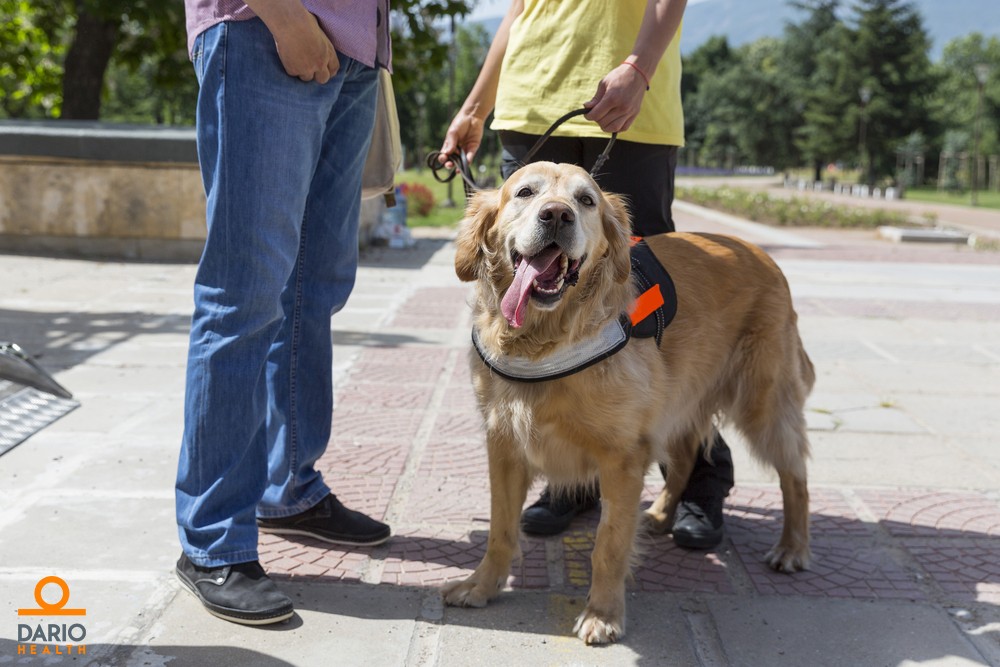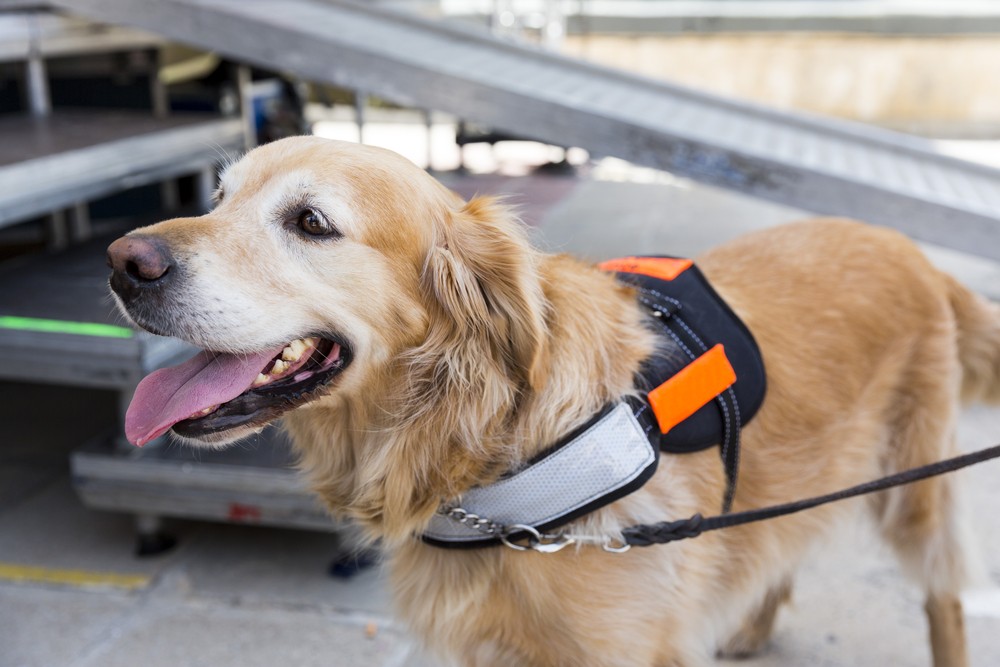More Strategies for Dealing with Hypoglycemia
A Closer Look at Diabetic Alert Dogs

Hypoglycemia, or low blood glucose levels, occur. We’ve written about this in the past (how to deal with hypoglycemia, the Dario way), and it’s important to review the article in-depth, but here’s a brief synopsis:
- Hypos happen more often than you might think, with one research showing that 58% of the sample group had a hypoglycemic event.1
- Eating right, exercising and staying on top of your medications can keep hypos in check.
- Use the Dario Emergency Hypo Alert with GPS Location feature so you can notify loved ones in the event of a hypo.
Now there’s another popular strategy on the rise and it deserves some close attention.
We’re talking about dogs. More specifically, diabetic alert dogs (also known as DADs)!
Dogs have long been known as man’s best friend. Not only are they loyal partners and make wonderful house pets, but they also help and motivate you to stay in shape. And a recent study shows that “owning a dog indicated a large, potentially health improving, average effect of 22 minutes additional time spent walking.”2
There’s another study that aptly dubs this the “Lassie Effect.”3 And the reason for that is that it is specifically big dogs that can provide this boost. Since little dogs don’t need as much exercise, they may not encourage you to get out as often as you need.

So, think big, and think of breeds that have excellent smelling abilities, like golden retrievers, or Labrador retrievers. This is extremely important because when you take a closer look at diabetic alert dogs, you need a dog that can be trained to smell your body odor as there are chemical shifts that occur during a hypoglycemic episode (or hyperglycemia for that matter).
With all this attention, it should be noted that federal law allows you to be accompanied by your service dog wherever you go. Therefore, having all the necessary licenses in place will give you more accessibility with this over a regular pet.
Beyond Type 1 provides an excellent resource for finding diabetic alert dogs, but they do come with a hefty price tag. Are they worth it? You’ll need to decide that on your own, but for now, we’ve provided you with a little something to consider.
Medical Disclaimer
The articles provided on this website are for informational purposes only. In addition, it is written for a generic audience and not a specific case; therefore, this information should not be used for diagnostic or medical treatment. This site does not attempt to replace the patient-physician relationship and fully recommends the reader to seek out the best care from his/her physician and/or diabetes educator.
[1] Diabetic Medicine: A Journal of the British Diabetic Association (2005). Frequency and predictors of hypoglycaemia in Type 1 and insulin-treated Type 2 diabetes: a population-based study. National Center for Biotechnology Information website. [2] Dall, P., Ellis, S., Ellis, B., Grant, P., Colyer, A., Gee, N., Granat, M. and Mills, D. (2017). The influence of dog ownership on objective measures of free-living physical activity and sedentary behaviour in community-dwelling older adults: a longitudinal case-controlled study. BMC Public Health. Available at: https://bmcpublichealth.biomedcentral.com/articles/10.1186/s12889-017-4422-5 [3] Westgarth C, e. (2017). Understanding how dogs encourage and motivate walking: cross-sectional findings from RESIDE. – PubMed – NCBI. Ncbi.nlm.nih.gov. Available at: https://www.ncbi.nlm.nih.gov/pubmed/27682237
DAR -0055 RevA 06/2019







